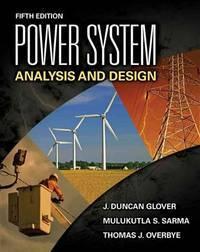Two transmission articles are presented here. The first article covers transmission conductor technologies including conventional conductors, high-temperature
Question:
Two transmission articles are presented here. The first article covers transmission conductor technologies including conventional conductors, high-temperature conductors, and emerging conductor technologies [10]. Conventional conductors include the aluminum conductor steel reinforced (ACSR), the homogeneous all aluminum alloy conductor (AAAC), the aluminum conductor alloy reinforced (ACAR), and others. High-temperature conductors are based on aluminum-zirconium alloys that resist the annealing effects of high temperatures. Emerging conductor designs make use of composite material technology.
The second article describes trends in transmission and distribution line insulators for six North American electric utilities [12]. Insulator technologies include porcelain, toughened glass, and polymer (also known as composite or non-ceramic). All three technologies are widely used. Current trends favor polymer insulators for distribution (less than 69 kV)
because they are lightweight, easy to handle, and economical. Porcelain remains in wide use for bulk power transmission lines, but maintenance concerns associated with management and inspection of aging porcelain insulators are driving some utilities to question their use.
Life-cycle cost considerations and ease of inspection for toughened glass insulators are steering some utilities toward glass technology.
a. Why is aluminum today's choice of metal for overhead transmission line conductors versus copper or some other metal? How does the use of steel together with aluminum as well as aluminum alloys and composite materials improve conductor performance?
b. What is a high-temperature conductor? What are its advantages over conventional ACSR and AAC conductors? What are its drawbacks?
c. What are the concerns among utilities about porcelain insulators used for overhead transmission lines in the United States?
d. What are the advantages of toughened glass insulators versus porcelain? What are the advantages of polymer insulators versus porcelain? What are the disadvantages of polymer insulators?
Step by Step Answer:

Power System Analysis And Design
ISBN: 9781111425777
5th Edition
Authors: J Duncan Glover, Mulukutla S Sarma, Thomas Overbye





